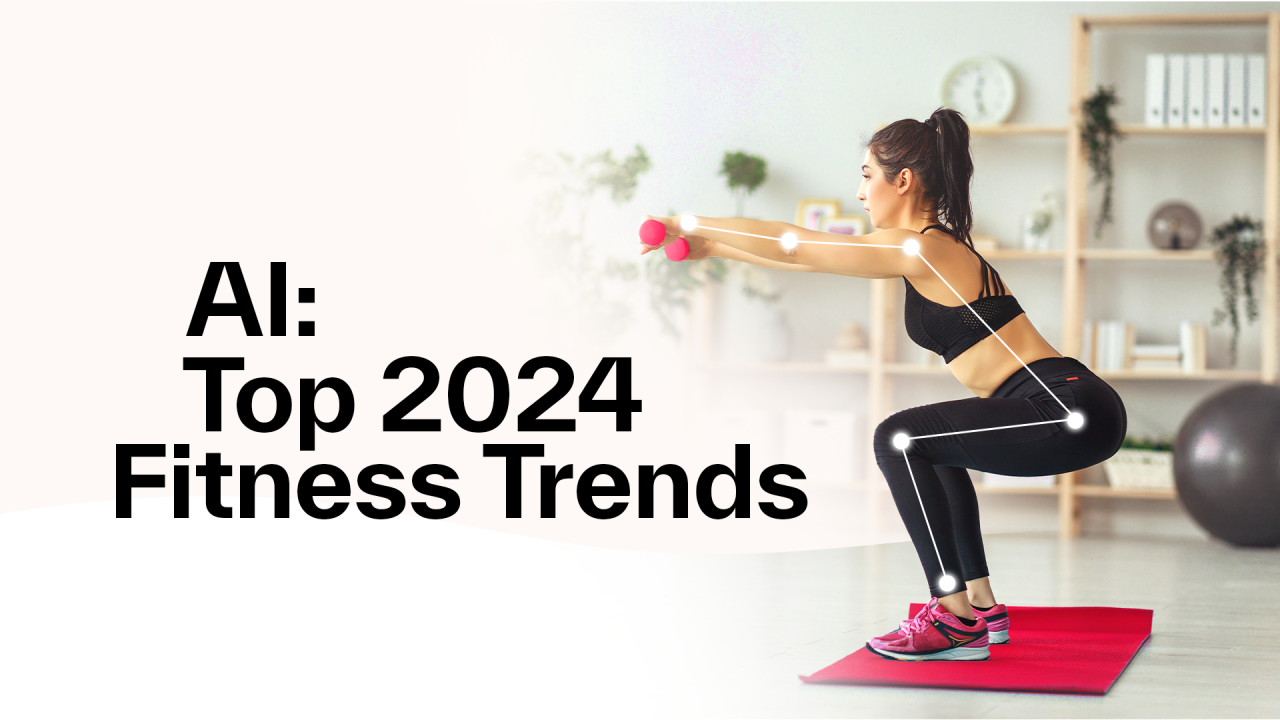The fitness landscape is constantly evolving, with new trends emerging year after year. In 2024, we're seeing a focus on personalization, technology integration, holistic wellness, and smarter approaches to exercise. Whether you're a seasoned gym rat or just starting your fitness journey, there's a trend here to pique your interest and help you reach your goals.
This comprehensive guide dives deep into the top 10 fitness trends of 2024, exploring their benefits, how they work, and where to find them.
1. The Rise of Personalized Fitness
Gone are the days of one-size-fits-all workout plans. Personalized fitness is taking center stage, leveraging technology and individual data to create customized exercise programs. This trend has several key aspects:
- Wearable Tech Integration: Fitness trackers, smartwatches, and other wearables are becoming increasingly sophisticated. They collect data on heart rate, sleep patterns, activity levels, and more. This data can be used to design workouts tailored to your individual fitness level, goals, and recovery needs.
- AI-Powered Workouts: Artificial intelligence (AI) is making its way into fitness apps and online platforms. AI algorithms can analyze your data and preferences, then create personalized workout plans that adapt as you progress.
- Smart Gym Equipment: Gyms are investing in smart equipment that communicates with wearable devices. This equipment can adjust resistance levels, track your reps, and provide real-time feedback on your form.
Benefits:
- Increased Efficiency: Personalized workouts are more likely to be effective because they target your specific needs and weaknesses.
- Reduced Injury Risk: Proper form and intensity are crucial for preventing injuries. Personalized plans can help ensure you're exercising safely.
- Boosted Motivation: Seeing progress is a powerful motivator. Personalized plans that track your progress can keep you engaged and on track.
Where to Find It:
- Many popular fitness trackers and smartwatches offer personalized workout plans based on your data.
- Several fitness apps, like Fitbod and Nike Training Club, use AI to create personalized workouts.
- Gyms with smart equipment often offer personalized training programs that utilize the equipment's data collection capabilities.
2. Tech-Infused Workouts: VR, AR, and Gamification
Technology is no longer just a tracking tool; it's becoming an integral part of the workout experience. Here are some exciting tech trends transforming fitness:
- Virtual Reality (VR) Workouts: VR puts you in a completely immersive environment. You can box in a virtual ring, climb mountains, or even kayak across a digital lake. VR offers a fun and engaging way to break the monotony of traditional workouts.
- Augmented Reality (AR) Workouts: AR overlays digital information on the real world. Imagine having a virtual trainer guiding you through exercises in your living room, or seeing your workout stats displayed in real-time on your gym equipment. AR adds a layer of interactivity and information to your workouts.
- Gamification: Fitness apps and programs are incorporating game mechanics like points, badges, and leaderboards to make exercise more fun and engaging. Gamification can help you stay motivated and enjoy the process of getting fit.
Benefits:
- Increased Engagement: VR, AR, and gamification make exercise more enjoyable and interactive, especially for those who find traditional workouts boring.
- Improved Performance: VR can provide a realistic training environment for specific sports or activities. AR can help you perfect your form or technique.
- Enhanced Motivation: Gamification elements like competition and rewards can keep you motivated and coming back for more.
Where to Find It:
- Several VR fitness platforms are available, such as FitXR, BoxVR, and Supernatural.
- AR fitness apps are still in their early stages, but some options like Holodia Fitness and SYVR offer AR workout experiences.
- Many fitness apps and programs incorporate gamification elements. Look for apps that offer points, badges, and challenges to keep you engaged.
3. The Focus on Functional Fitness
Forget about isolating muscle groups; functional fitness is all about training your body to move in the way it's meant to move. This type of training emphasizes exercises that mimic everyday activities, such as squatting, lunging, pushing, and pulling.
Benefits:
- Improved Daily Activities: Functional fitness makes everyday tasks like carrying groceries or climbing stairs easier and safer.
- Injury Prevention: Strong, functional muscles can help prevent injuries caused by awkward movements or imbalances.
- Overall Fitness Improvement: Functional fitness trains your entire body to work together, improving your overall fitness level.
Where to Find It:
- Many gyms offer functional fitness classes, such as CrossFit, HIIT
- Functional Fitness Gyms: These gyms often have specialized equipment like kettlebells, medicine balls, TRX suspension trainers, and rig systems designed for functional training. They may also offer classes led by certified functional fitness coaches. Look for gyms that advertise functional fitness, CrossFit, or HIIT (High-Intensity Interval Training) classes.
- Online Resources: There are numerous online resources offering functional fitness workouts. Websites like Wodbox, Darebee, and Fitness Blender provide free and paid functional workout plans you can do at home. Fitness YouTube channels like Athlean-X and Fitness Blender also offer a variety of functional fitness routines.
- Personal Trainers: Hiring a certified personal trainer specializing in functional fitness can create a personalized program tailored to your needs and goals. Look for trainers with certifications like CF-L1 (CrossFit Level 1) or certifications from organizations like the National Strength and Conditioning Association (NSCA).
Additional Tips:
- Look for bodyweight exercises you can do anywhere, such as squats, lunges, push-ups, rows, and planks.
- Utilize common household items like furniture and water bottles for makeshift weights.
- Many parks offer outdoor fitness equipment that can be used for functional training exercises.
By incorporating these resources and tips, you can easily integrate functional fitness into your workout routine!
